What Makes the Ngorongoro Crater Worth Visiting?
Tanzania’s safari circuit is often divided into two halves for ease of understanding. The remote “southern circuit” of Nyerere and Ruaha national parks, which sometimes also includes the western regions of Mahale and Katavi national parks; and the ever popular “northern circuit” which typically includes Tarangire, Lake Manyara and Serengeti national parks, as well as the awe-inspiring Ngorongoro Crater.
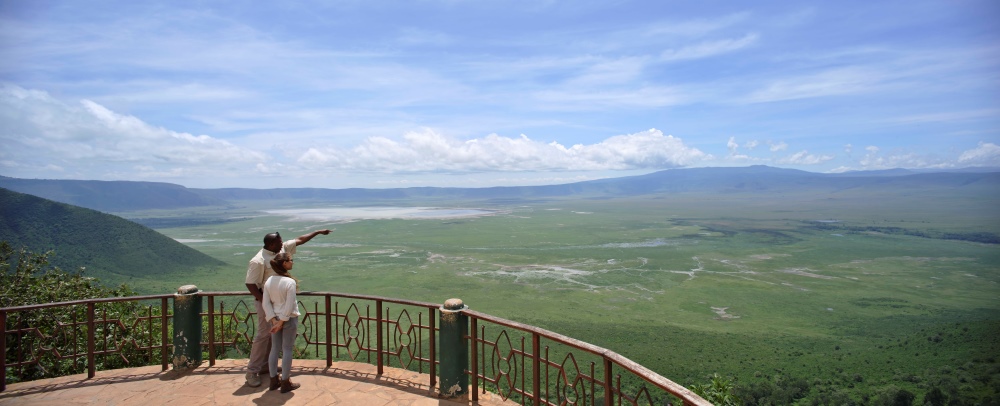
A viewing spot on the crater rim provides the perfect vantage point from where to understand and appreciate the size and beauty of the Ngorongoro Crater.
Location and creation
The Ngorongoro Crater is situated within the Ngorongoro Conservation Area, an expansive 8,000km2 landscape of woodland forests, open plains, and rolling highlands, of which the Ngorongoro Crater contributes just 260km2. Despite the rich tapestry of terrain and scenery found throughout the conservation area, it is the crater that consistently steals the limelight. If you have experienced a game drive on the crater floor or stood at the viewpoint as rays of sun pierce the clouds and highlight patches of the landscape below, you’ll understand why the crater attracts the attention it does.
The Ngorongoro Crater is the world’s largest unbroken, unflooded, volcanic caldera. A caldera is created after a volcano has erupted, spewing liquid hot magma into the surrounding area, and creating a hollow pocket of space below the surface of the volcano. Lacking the structural support, the base of the volcano collapsed into the below space, but the lower walls of the cone remained intact during this collapse. Millions of years ago, these events created what is arguably the most remarkable game drive location in all of Africa today.
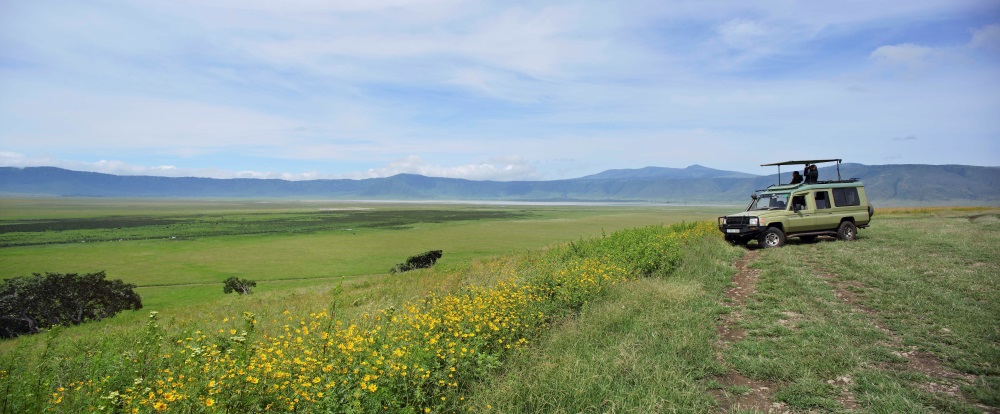
Encircled by the walls of the crater, a game drive on the crater floor is a truly unique experience.
Game drives
The game drive experience from most lodges in the area starts on the crater rim, following a steep descent road that winds down the inner wall and onto the crater floor. From this initial position, it’s hard to fully appreciate the nature of this experience but, as you venture across the open plains, the walls rising around you on all sides are impossible to ignore, fully enclosed with limited line of sight in all directions. It is only once you are in this position that you can truly comprehend the fascinating nature of this experience. As dramatic as the landscape is, it is the wildlife that inevitably steals the show. And, given the predominantly flat surface area of the crater floor, locating wildlife is usually considerably easier than it can be in other parks.
An estimated 30,000 large mammals live inside the Ngorongoro Crater. Lion, cheetah, leopard, hyena, and jackal compete for prey, while buffalo, zebra, and wildebeest enjoy the nutrient rich grazing across the crater floor. A small population of black rhino are present, and herds of elephant make their way through the forests between the floor and the crater rim, making the Ngorongoro Crater a Big Five destination. Noticeably absent from the list of wildlife you are likely to encounter, are the long-legged giraffe you might expect to see gracefully strolling across the plains. One explanation for this is that the walls of the crater are too steep, making the descent to the crater floor an impossible task for them. Whilst other animals could leave if they wanted to, most choose not to, opting to reside in the crater on a year-round basis. While most parks and reserves have a degree of seasonality to their game viewing, usually based on availability of water, the Ngorongoro Crater offers consistently high game viewing throughout the year. However, during the months of December to March each year, the open plains of the conservation area northwest of the crater, see an enormous influx of wildlife as The Great Migration arrives in its hundreds of thousands.
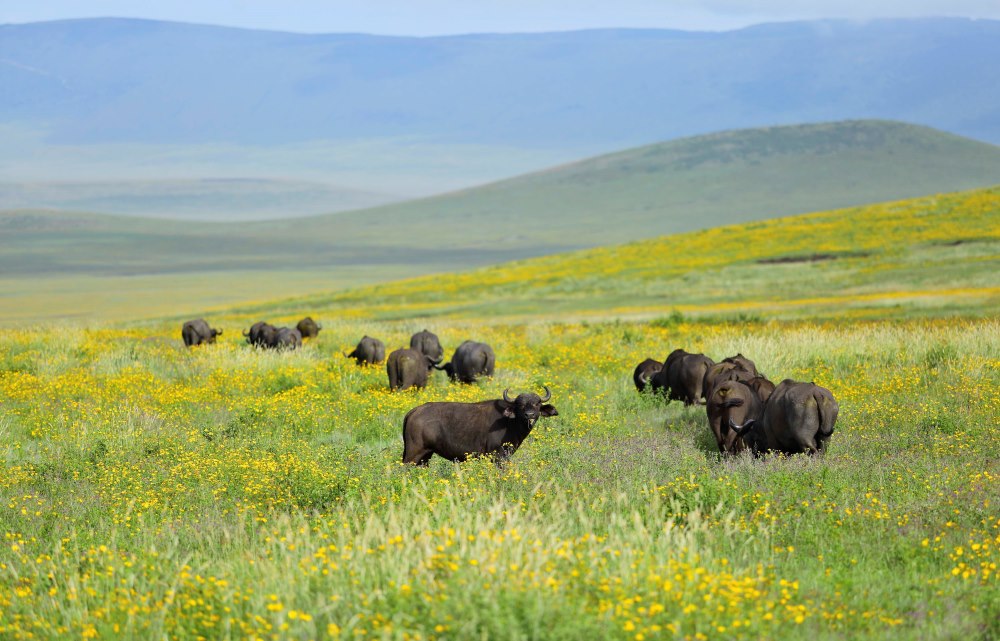
Wild flowers bloom after the rains, making the month of May particularly popular for photographers looking to capture wildlife amidst carpets of colour.
The Great Migration
Driving from the crater rim to the grassy plains of Ndutu is a remarkable experience when the Migration is in the south. 1.5 million wildebeest and zebra mass across the nutrient rich plains to drop their young and gather their strength before the search for greener pastures lures them northwards once again. The elevation from the crater rim drops significantly as the road descends the outer walls of the volcanic highlands towards the open plains, a change of nearly 1,000 meters in altitude. From a distance, the plains appear to have the shadows of clouds moving across them. Giant, black swathes of shadow, as though enormous cumulonimbus clouds are battling the sun for dominancy. However, as you continue towards the plains, it becomes clear that these are not shadows, but the mega-herds of The Great Migration. Predators skirt the periphery, separating the young, old, or injured for the herd, picking them off as and when they choose.
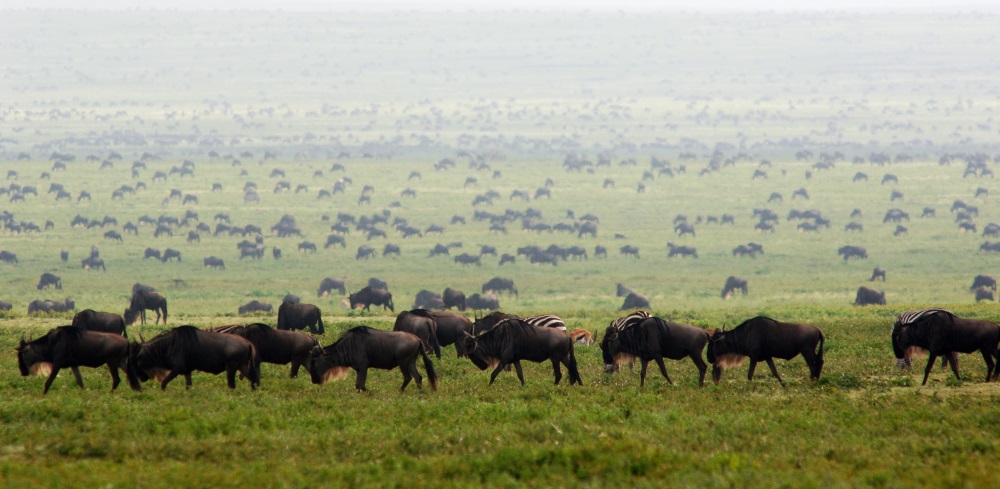
Thousands and thousands of wildebeest fill the open grass plains in the northwest of the Ngorongoro Conservation Area between December from March each year.
Additional activities
To the north of Ngorongoro Crater, the lush and green rolling highlands continue towards the Olmoti Crater, across the Bulbul Depression to Empakaai Crater in the northeast corner of the conservation area. With no other camps or lodges in this pristine environment, and just traditional Maasai communities as neighbours, we opted to break the established mould of properties focussing on the Ngorongoro Crater, and instead built The Highlands on the far side of Olmoti Crater. While the sought-after game drive experience is still easily accessible from The Highlands, our location opens up a wealth of additional, enriching experiences which allow you to get closer to the people and the landscape of Ngorongoro.
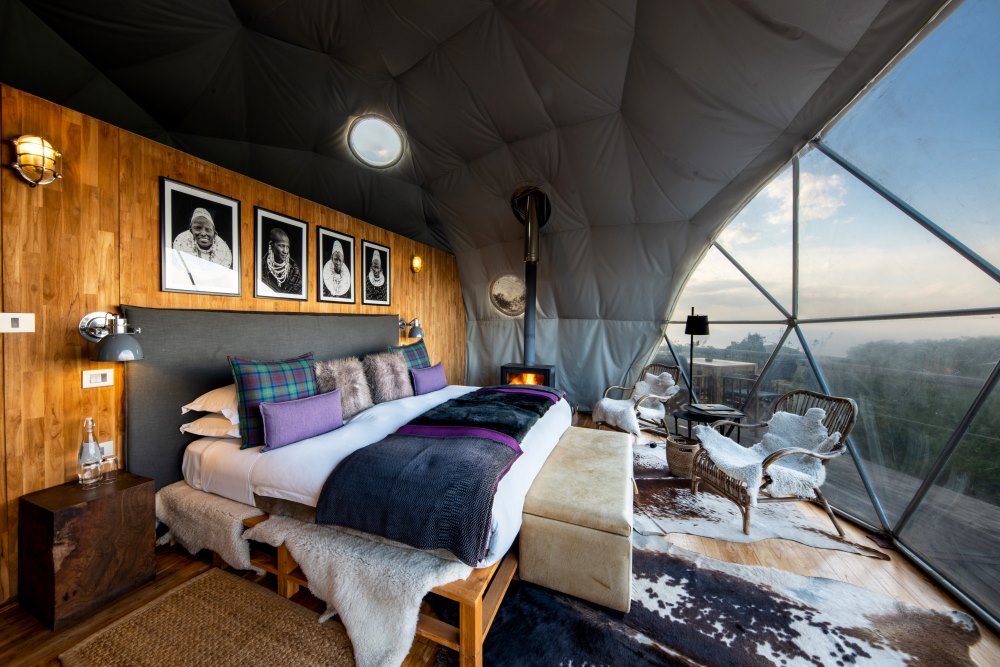
The interior of a suite at The Highlands, designed and furnished for warmth and luxurious comfort.
Olmoti Crater offers spectacular views across the inside of the crater bowl after a short, steep hike through lush highland forest to the crater rim. The starting point for Olmoti is en route to The Highlands, making this hike an ideal introduction to the area before even arriving in camp. Empakaai Crater offers a different, but equally rewarding experience as you start from the rim and hike down through a variety of vegetation. On the crater floor, a flamingo lined lake surrounded by the steep crater walls offers a scenic picnic location and the opportunity to gather your strength for the hike back up to the rim. Within walking distance from The Highlands, a neighbouring Maasai community offers a glimpse into a traditional way of life, entirely foreign to you or I. While many cultural experiences can feel forced or contrived, this interaction provides a genuine and authentic opportunity to engage and learn about the Maasai people, their culture, and customs.
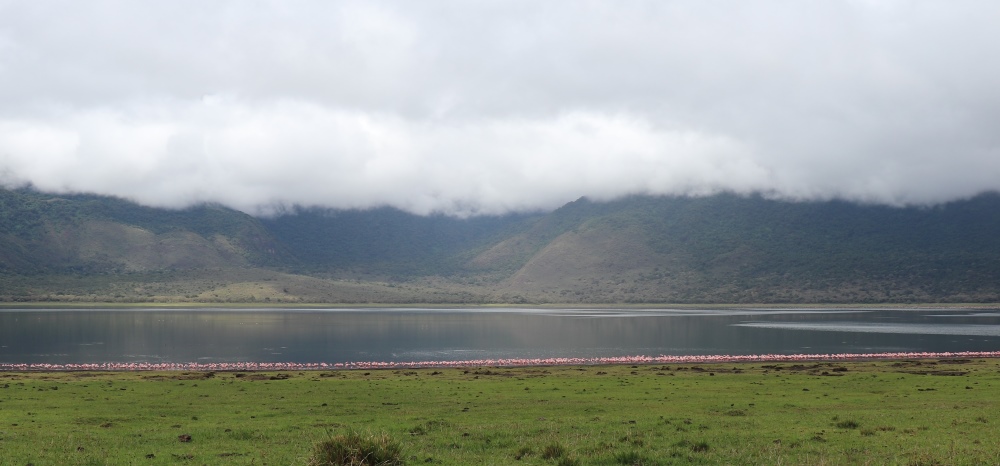
Clouds hanging low over the Empakaai Crater and the pink flamingo lined crater lake.
The Ngorongoro Crater is a core experience in a “northern circuit” itinerary, which makes it a popular destination, especially during the months of peak travel season. However, the exclusive positioning of The Highlands, allows you to retreat from the dusty masses around the crater, into the green forested regions with a variety of soul nourishing experiences on your doorstep. There is so much more to the Ngorongoro Conservation Area than just the Ngorongoro Crater, and it is this depth of experience that we want to share with you.
More Destinations Articles

What’s the difference? National Parks, Game Reserves, and Conservancies in East Africa
02 February 2020To most of us, a national park, game reserve, or conservancy are all the same...

7 Of Our Favourite Things About Lake Manyara National Park
04 December 2019Lake Manyara National Park is located in Tanzania's Arusha and Manyara region...

Naboisho: Home To The Mara’s Newest Pool
28 November 2019Naboisho is now home to the Mara Naboisho Conservancy’s newest pool. During t...

Guest Gallery: The Serengeti At Its Best
27 November 2019We recently had the pleasure of welcoming guests, Chris and Monique Fallows t...





